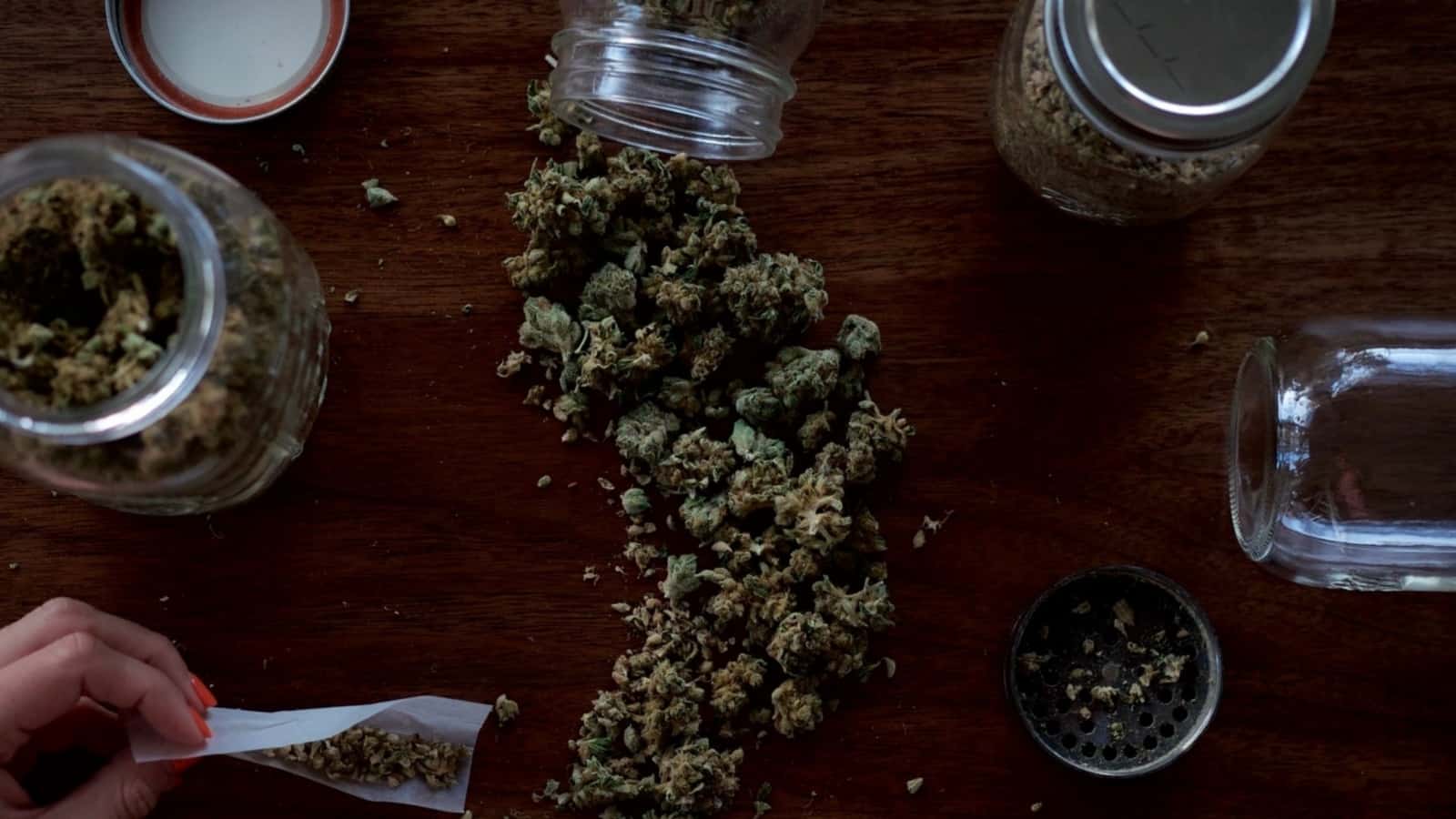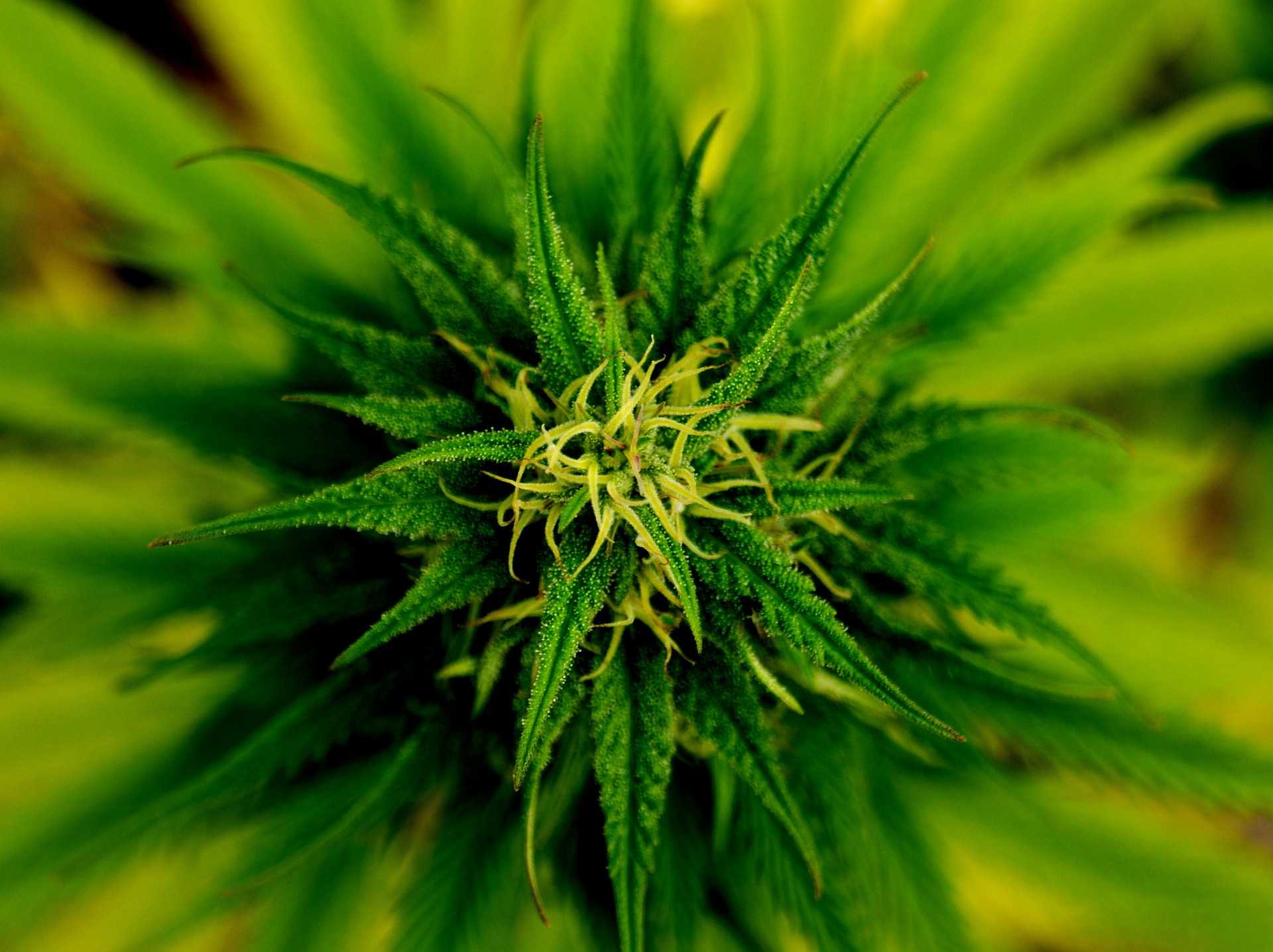
Cannabis Species: Sativa, Indica, and Ruderalis Plants
From a botanical point of view, cannabis is an incredibly exciting plant that has adapted over centuries to develop a variety of use.
There are thousands of strains of marijuana available today. The different characteristics between strains include:
- Flavours
- Aromas
- Growth attributes
- THC levels
- CBD levels
- Ability to grow in different environments
Don’t worry if the very thought of having thousands of different varieties, each with its nuances, seems to make choosing a strain more challenging.
By taking a step back in the spectrum of cannabis varieties, we can simply identify and classify these varieties into three (four including hybrids) species:
- Sativa
- Indica
- Ruderalis
- Hybrids
Note: Science’s classification of cannabis is disputed. Although its original classification concerns only one species (Sativa) contemporary researchers, as well as experts, identify three different varieties, namely: Sativa, Indica, and Ruderalis.
Sativa
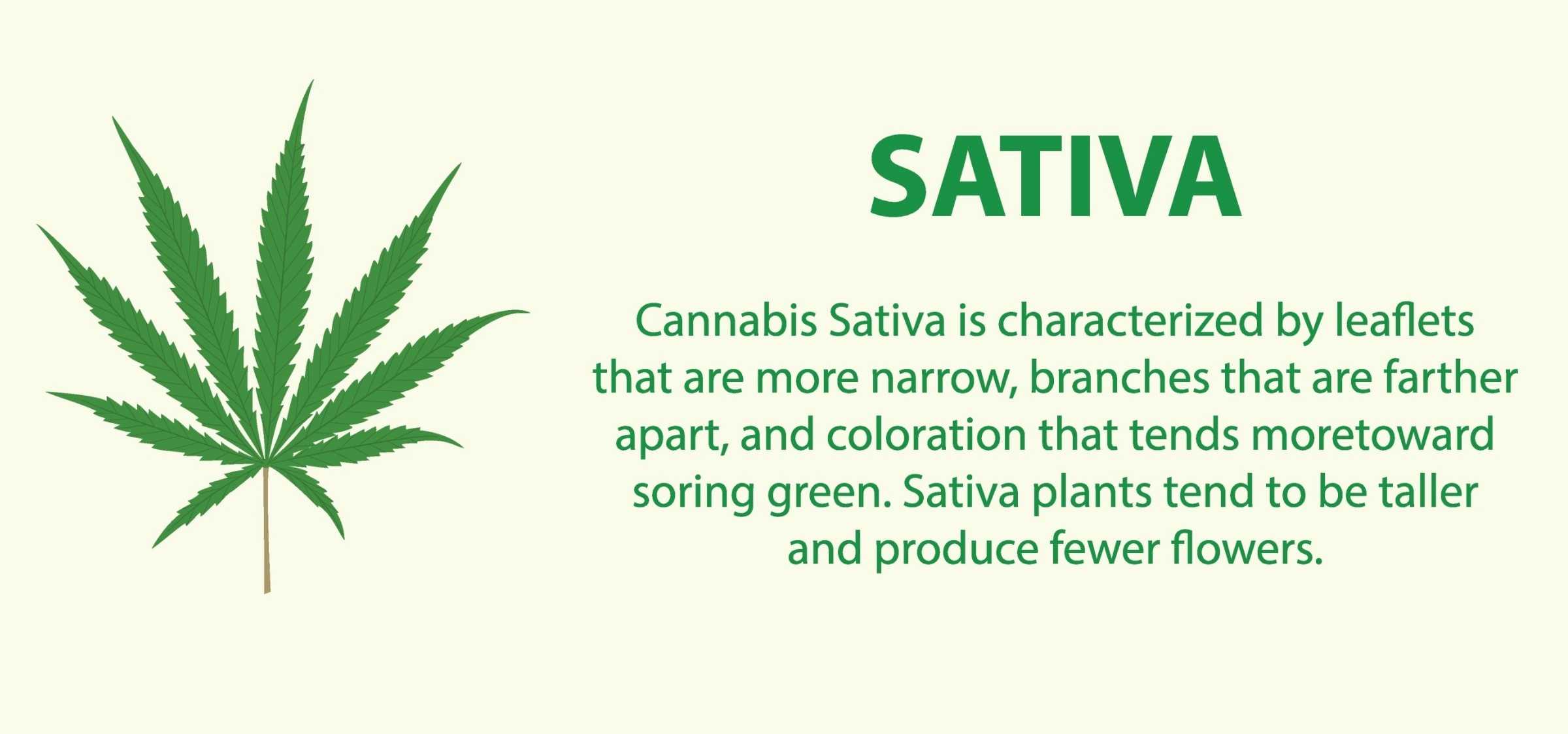
It is has a preference for milder climates, the continuous sun exposure that Sativa experiences allow it to reach a large size, quickly equaling two meters in height. It also produces more leaves than its Indica counterpart.
Chemically, Sativa also offers the most significant variation in cannabinoids: the chemical components found within cannabis. Sativas can also provide high or low concentrations of THC or CBD.
THC is the primary psychoactive component of cannabis and is usually associated with it, while CBD is non-psychoactive.
The cannabis Sativa characteristics
The Sativa is the tallest and most well known member of the cannabis family. Here’s a breakdown of the characteristics of the Sativa and the properties associated with the plant.
| Known as | Sativa |
| Origin | South America, Thailand |
| Leaf shape | Large and thin leaves with serrated edges |
| Plant appearance | Tall and thin |
| Average height | 10 to 20 feet (3 metres) |
| Medicinal uses | Depression, anxiety, bipolar, ADHD, anorexia etc. |
| High effects | Uplifting head-high for creativity, focus, social and energy |
| Best time used | Daytime |
| THC content | Medium to high |
| CBD content | low to medium |
| Growth time (maturity) | 10 to 18 weeks |
| Indoors / outdoors | Outdoors |
| Climate | Humid and tropical |
| Flowering Light cycle | 12 hours / 12 hours |
Indica
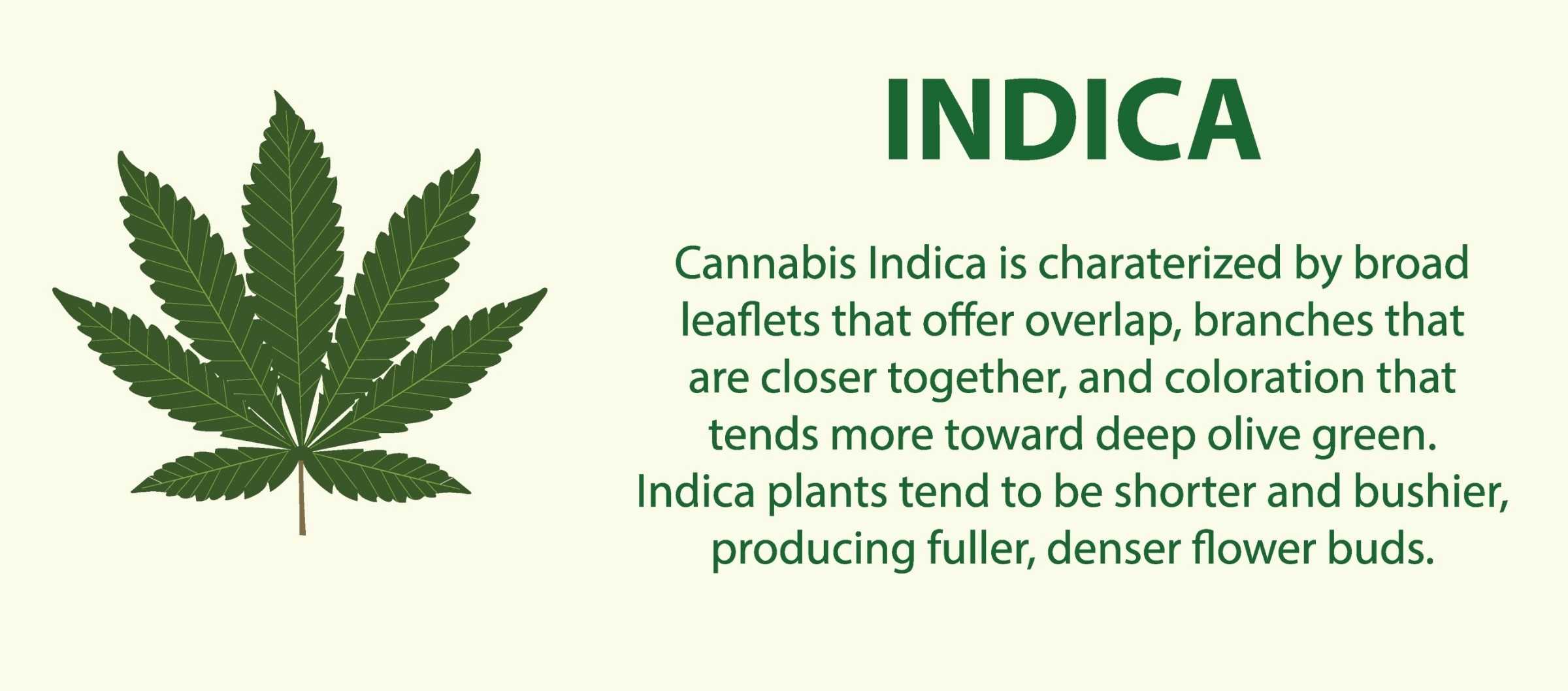
While Sativa grows tall and thin, Indica is its small and stocky alternative. Native to the mountainous regions of Pakistan and Afghanistan, this type of plant is better adapted to cold and severe temperatures.
As we mentioned, the structure of Indica is much smaller, it is bushy with larger leaves, but in smaller quantities compared to Sativa. Because of the colder climates, it has also evolved to show a shorter flowering time. The THC concentration of Indica is generally higher than that of Sativa, but the cannabinoid CBD is still present.
The cannabis Indica characteristics
The Indica is the medical member of the cannabis family. Here’s a breakdown of the characteristics of the Indica and the properties associated with the plant.
| Known as | Indica |
| Origin | Afghanistan, India, Pakistan |
| Leaf shape | Wide |
| Plant appearance | Bushy and short |
| Average height | 5 feet |
| Medicinal uses | Epilepsy, MS, Parkison’s, Sleep Apnea, Chronic Pain etc. |
| High effects | Medium-to-heavy body high and light head high |
| Best time used | Nighttime |
| THC content | Low to medium |
| CBD content | Medium to high |
| Growth time (maturity) | 6 to 8 weeks |
| Indoors / outdoors | Indoors |
| Climate | Sunny, humid and tropical |
| Flowering Light cycle | 12 hours / 12 hours |
Ruderalis
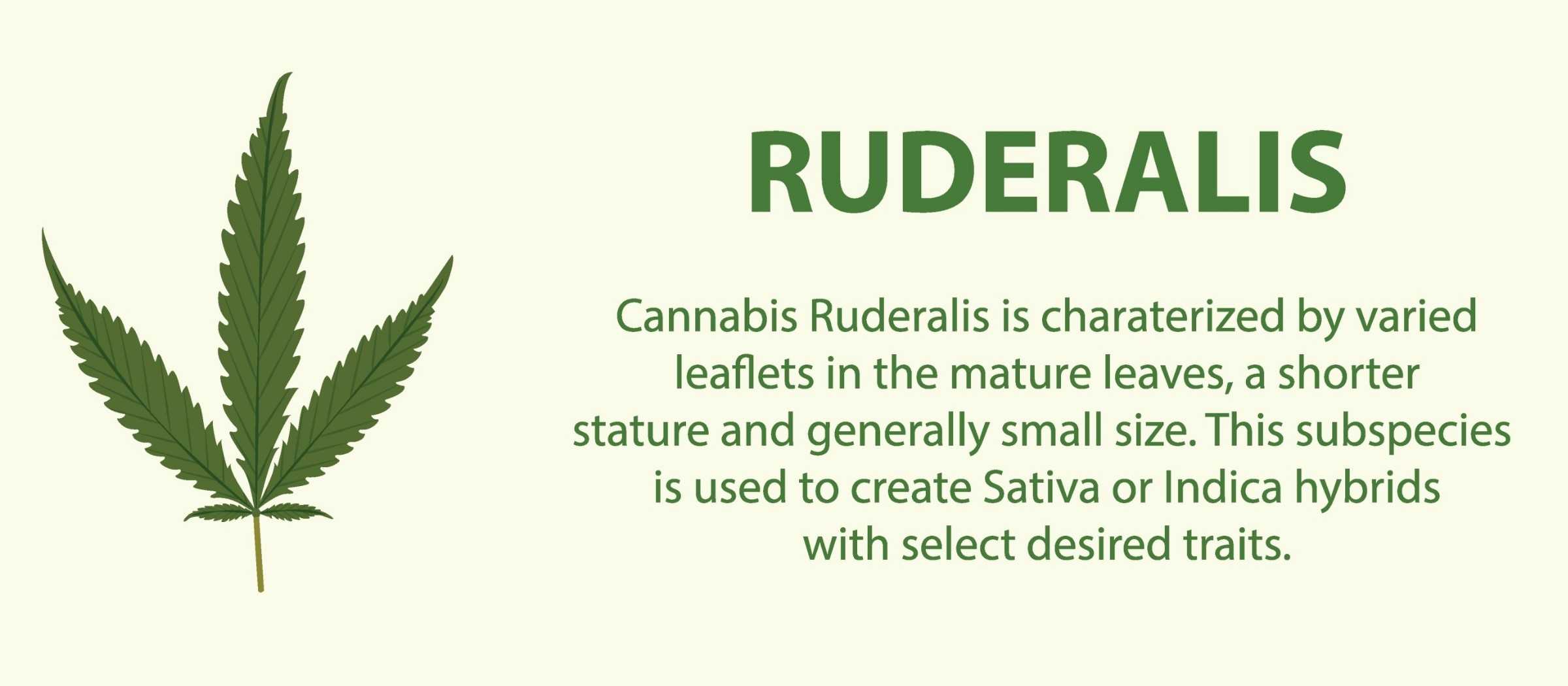
Often regarded as the golden mean of cannabis species, Ruderalis shares similarities with both Sativa and Indica. Depending on the specifics of the genetic inheritance of one Ruderalis variety, certain traits will be more important than in another. Ruderalis is much bolder than the other species, as it is used to growing in less than ideal regions of Central Asia.
The Ruderalis plants will not grow to vary widely; however, what differentiates them is the way they flower. These species are not influenced by light cycles. Instead, the plants will flower after a predefined period.
This makes the Ruderalis cannabis strains a popular choice when you do not have the right lighting conditions while growing outdoors.
Low light exposure. As a happy medium, it also has a good mixture of cannabinoids. Across Ruderalis species, THC concentrations are almost always very low, sometimes with peaks in CBD concentrations.
The cannabis Ruderalis characteristics
The Ruderalis is a unique member of the cannabis family. Here’s a breakdown of the characteristics of the Ruderalis and the properties associated with the plant.
| Growth height | 1 to 2 feet tall |
| Leaves colour | Light green shade |
| Appearance | Small vegetable plant or flower |
| Bud (flower) size | Small and plump |
| Flowering cycles | 21 to 30 days |
| Light cycle | Light cycle has no effect on flowering |
| Growing difficulty | Easy with minimal maintenance |
| Growing environment | Any weather, outdoors and indoors |
The effects of Ruderalis
The Ruderalis is often overlooked due to its smaller yield and lower THC content, but the Ruderalis is a great choice due to it requiring minimal effort to grow, survives in harsh weather and flowers every 30 days like clockwork.
The Ruderalis is a good choice for crossbreeding. If you can find another species with great flavour and great THC content, but hard to grow, then the Ruderalis would be a great candidate for crossbreeding.

James King
James is an experienced writer and legal cannabis advocate in Australia. He answers all the questions about business, legalisation and medicinal cannabis.
Disclaimer: Cannabis Place are not doctors and we recommend consulting health professionals for accurate information. This site may contain information regarding drugs. This content is designed for an 18+ audience. Click here for our full disclaimer



